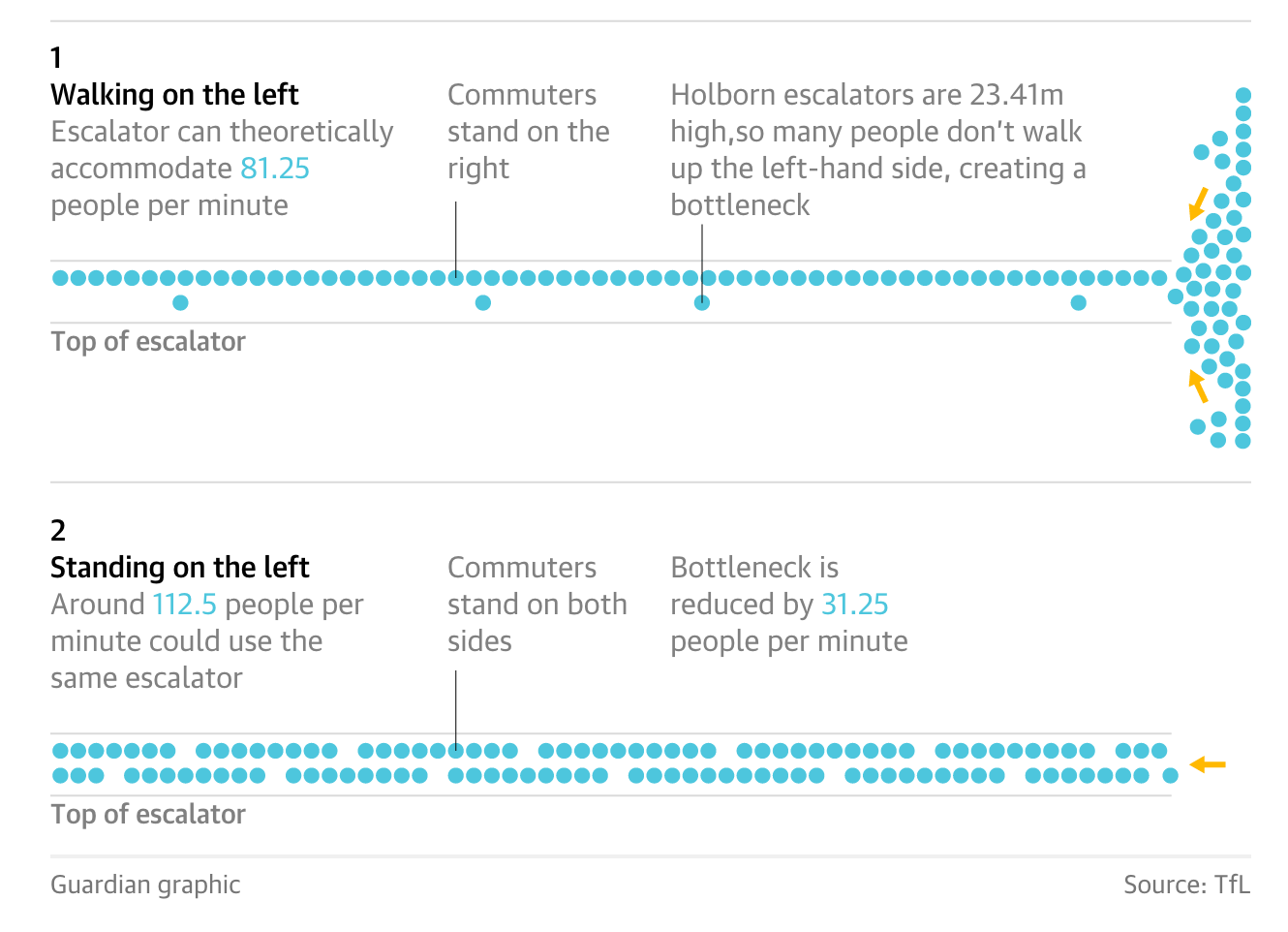In 2016, we published our eBook Everything You Need to Know About Queueing Theory, and as part of its launch, we blogged about one way (of the many) queueing theory has recently shown up in the real world and the news. In that post, we shared a report showing that the London Underground behaves in ways that at first seem unintuitive, but are comprehendible if you have a handle on how queueing works. Specifically, studies suggested when the Underground’s individual trains travelled at higher velocities, travel time for passengers actually got worse. Why? The higher individual speeds were not optimal for the particular parameters of the Underground system, and they caused bottlenecks to form at key hubs, hindering the circulation of the entire system.
Later, The Guardian reported another interesting queueing news item related to the London Underground’s congestion. In this case, the Underground’s analysts aren’t concerned with the trains themselves, but with the escalators shuttling people in and out of the stations. In London, like many other places, the social convention for riding an escalator dictates that if you’re riding passively, you stand on the right side and leave room for more athletic commuters on the left, to actively lunge up the stairs. (Weird that in the U.K. they drive on the left side of the road, but escalator etiquette is the same as in the States….) New queueing studies have suggested, however, that based on the relatively low frequency of active escalator-climbers, total circulation of passengers would be considerably improved if both sides of escalator steps were dedicated to standers, ultimately doubling the capacity for those passengers. As The Guardian says,
"The theory, if counterintuitive, is also pretty compelling. Think about it. It’s all very well keeping one side of the escalator clear for people in a rush, but in stations with long, steep walkways, only a small proportion are likely to be willing to climb. In lots of places, with short escalators or minimal congestion, this doesn’t much matter. But a 2002 study of escalator capacity on the Underground found that on machines such as those at Holborn, with a vertical height of 24 metres, only 40% would even contemplate it. By encouraging their preference, TfL effectively halves the capacity of the escalator in question, and creates significantly more crowding below, slowing everyone down."
As The Guardian also reports, in London, social standards are sacrosanct; during an hour-long trial period in which passengers were directed to stand on both sides of the escalator at Holborn Station, passengers were aghast at the “unusually severe provocation.” Even though math and queueing theory clearly show new escalator protocol is preferable — necessary, even, considering London’s incredible rising congestion — it's at odds with people’s normal behavior, and therefore not automatically accepted. While this sounds funny at first, methods for how to get people to change their behavior, even to become more logical and efficient, must be carefully considered.
"'Originally, we thought enforcement might be a good idea,' Harrison told colleagues at the wash-up, “as in people standing on the left in uniform, so that people couldn’t walk past them. But after concerns about possible assaults were raised, we decided it wasn’t that good of an idea. So we went for encouragement.” That meant teams of staff standing at the bottom of the escalators with loudhailers, asking commuters, as cheerfully as possible, if they would mind standing on both sides. It mean plain-clothes “plants” – “great, big lift engineers,” according to Stoneman – being sent up the escalators to block the way for others and create a new sort of social pressure. It even meant asking amenable couples to hold hands across the escalator, the better to thwart those who wished to slalom through the line."
This case is especially fun to consider, as it shows queueing theory visibly affecting cultural norms in a major city. Queueing theory: math and life meeting more often than you might think. And, maybe most poignantly, in London's experiment, queueing theory was a huge success:
"Through their own observations and the data they gathered, Harrison and her team found strong evidence to back their case. An escalator that carried 12,745 customers between 8.30 and 9.30am in a normal week, for example, carried 16,220 when it was designated standing only. That didn’t match Stoneman’s theoretical numbers: it exceeded them."
To read more about queueing theory, check out our ebook here.






